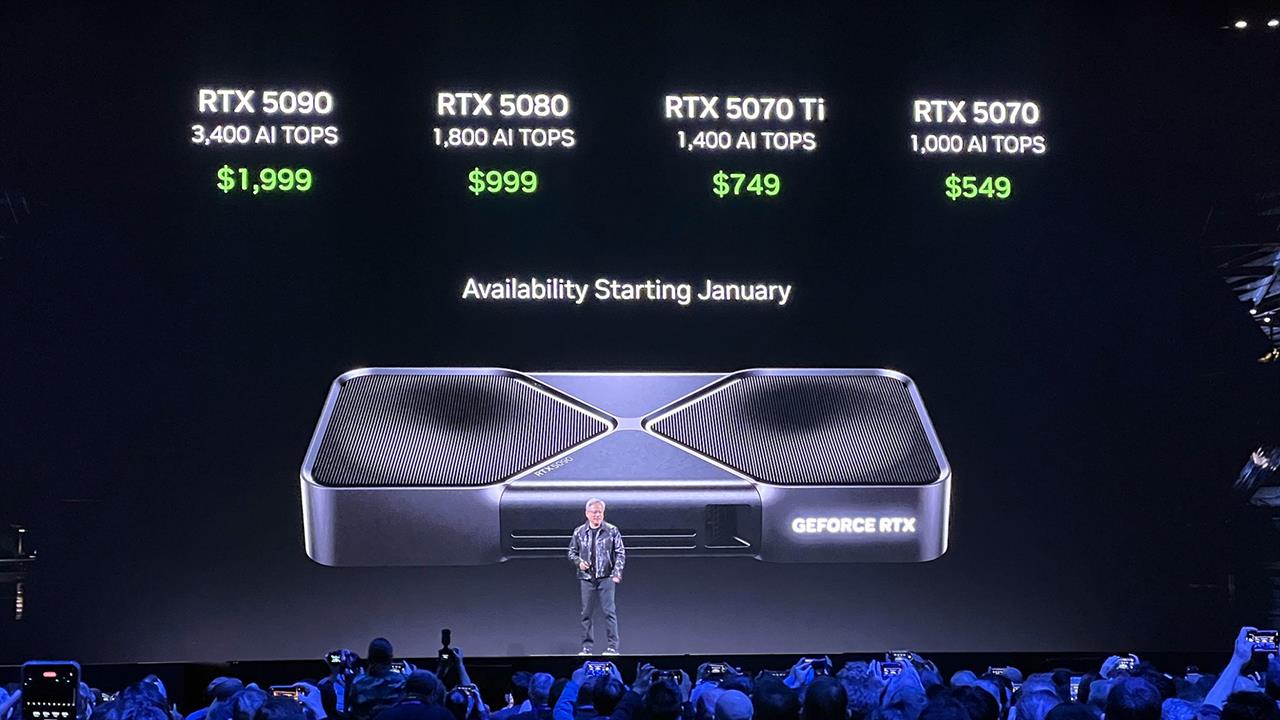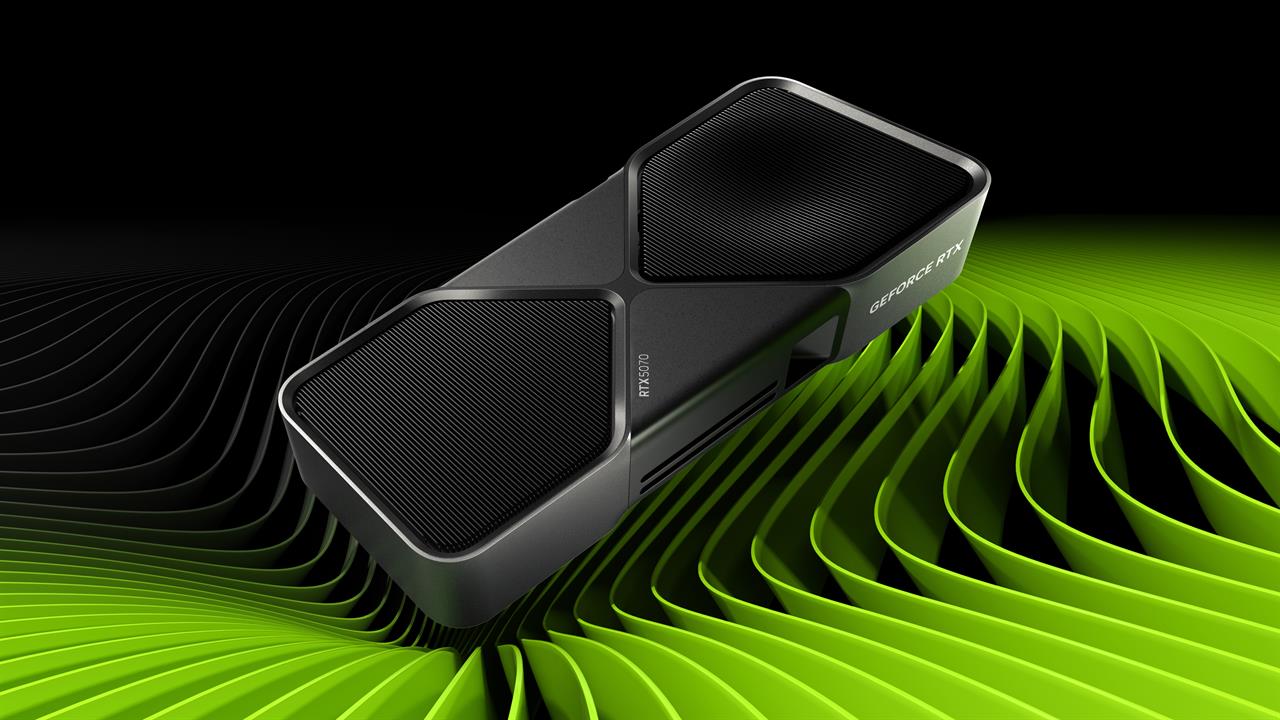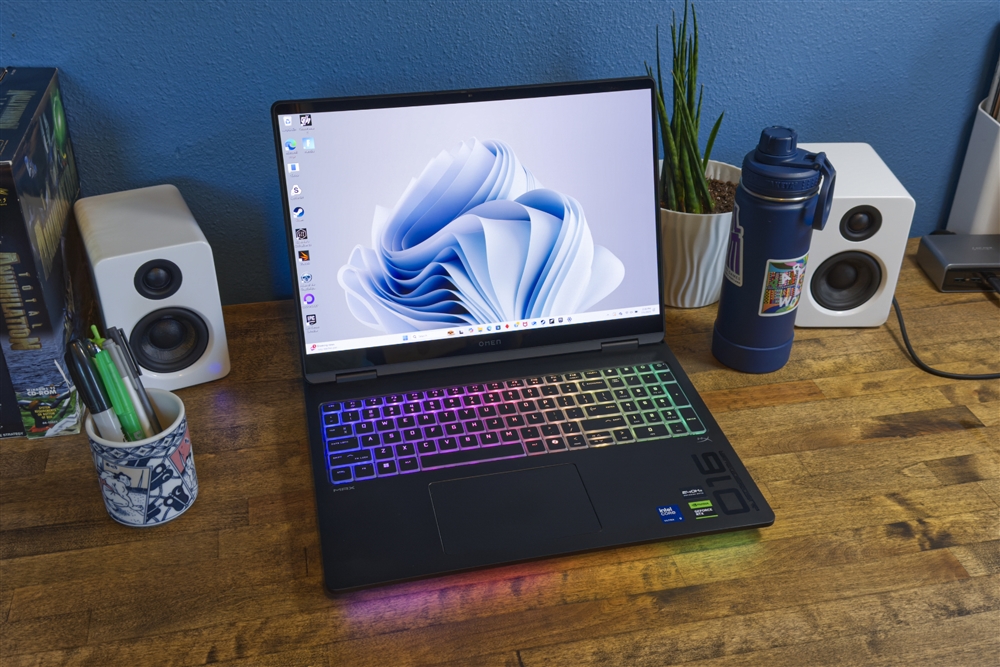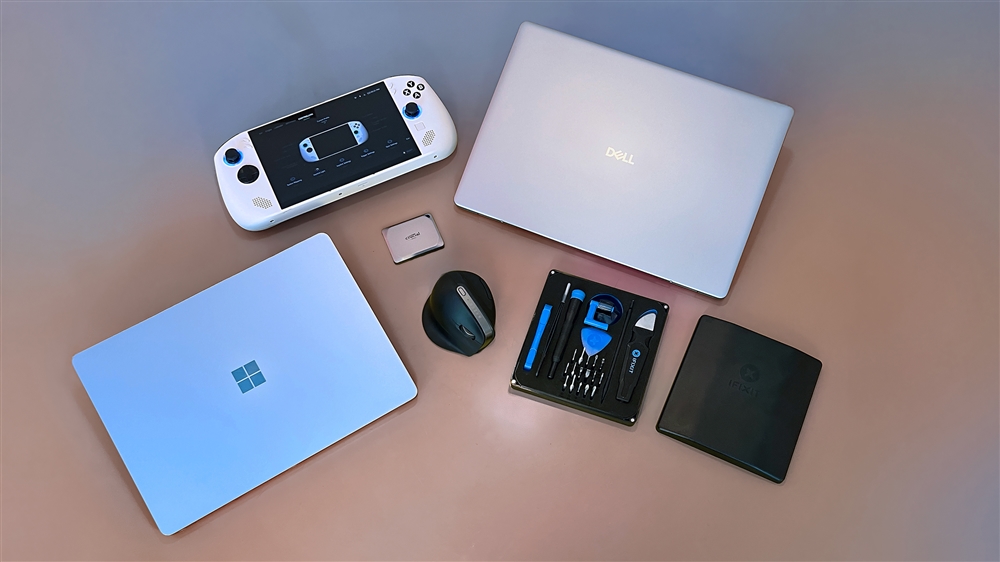NVIDIA RTX 50-Series GPUs Kick Off CES 2025
The eagerly awaited GPUs led CEO Jensen Huang's keynote at CES 2025 and start at $549.News
 Credit: Dan Ackerman
Credit: Dan AckermanAfter months of speculation and rumors, NVIDIA officially announced its RTX 50-series GPUs, built off its Blackwell chip technology, during a keynote at CES in Las Vegas.
The AI and graphics chip giant said it plans to launch four models of its GPU, starting with the $549 RTX 5070, which NVIDIA CEO Jensen Huang said offers processing power comparable to the company's high-performance RTX 4090 GPU, which cost $1,599 when it launched in 2022. The now-leading $1,999 RTX 5090 is expected to provide twice the performance of its predecessor.
“It’s impossible without artificial intelligence,” Huang said while announcing the devices. He added that the company has developed a mobile graphics chip for laptops that’s capable of offering the performance of the previous-generation 4090 by using half the power. “The energy efficiency is off the charts.”
The 50-series lineup includes:
- RTX 5090: $1,999, 3,400 TOPS
- RTX 5080: $999, 1,800 TOPS
- RTX 5070 TI, $749, 1,400 TOPS
- RTX 5070: $549, 1,000 TOPS
Availability for these desktop GPUs begins January 30 for the 5090 and 5080, with the 5070 Ti and 5070 coming in February.
The move marks the latest in NVIDIA's plans to regularly upgrade its graphics chips amid the tech industry's frenetic excitement over artificial intelligence software, which is often powered by NVIDIA's chips. The company's popularity as an AI chip maker has helped make it one of the most highly valued companies in the world at more than $3.6 trillion.
Huang used his company's CES keynote to discuss a series of AI-powered initiatives the company is leading, including self-driving cars. Huang said NVIDIA intends to release an upgrade for its robotics computer engine, called Thor, which he said is 20 times more powerful than the company's previous technology that's already being used in self-driving vehicles. Huang said the company's Thor technology will also be able to power humanoid robots.
"The AV industry is here," Huang said, adding that he expects autonomous vehicle development to improve "tremendously over the next several years."

More AI on the the way
Huang said that he believes humanoid robots are "just around the corner," with one of the biggest challenges being to teach the devices to replicate human-like motions. NVIDIA's Thor computers and simulation software will help to make that happen, Huang said. That technology includes the company's Digits AI supercomputer.
"I delivered the first one to an AI startup in 2016 called OpenAI," Huang noted, "and obviously it revolutionized artificial intelligence computing."
Now, NVIDIA has shrunk the technology to roughly the size of a book (or an Apple Mac Mini), but still capable of offering the super-computer smarts of the AI supercomputers it's been developing. The device will come with 128GB of "unified coherent memory" and up to 4TB of NVMe storage. The device will be powered by a specialized Linux-based OS NVIDIA calls DGX OS. The company plans to charge $3,000 apiece when the device launches in May.
NVIDIA also announced that its cloud gaming service GeForce NOW will support Valve's Steam Deck, Apple's Vision Pro spatial computers, the Meta Quest 3 and 3S, and Pico mixed reality devices. NVIDIA is also launching its first GeForce RTX-powered data center in India, which will bring its library of 2,100 support titles to more gamers around the world.
More News from CES 2025
- Dell's Great PC Reboot: Meet the New Dell, Dell Pro, and Dell Pro Max
- New Razer Blade 16 Brings AMD Ryzen 9 and NVIDIA 5090
- Nitro Blaze Handhelds and AI-Powered Laptops Highlight Acer's CES 2025 Lineup
- Acer’s CES 2025 Includes New Predator Helios Laptops and a 5K Monitor
- What to Expect from AI and PCs at CES 2025
- This Week in AI: Time for CES to Show What AI Can Be
Ian Sherr is a widely published journalist who's covered nearly every major tech company from Apple to Netflix, Facebook, Google, Microsoft, and more for CBS News, The Wall Street Journal, Reuters, and CNET. Aside from writing, he tinkers with tech at home, is a longtime fencer -- the kind with swords -- and began woodworking during the pandemic.








